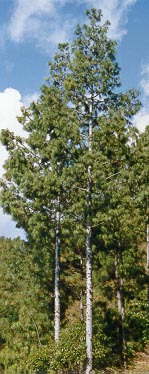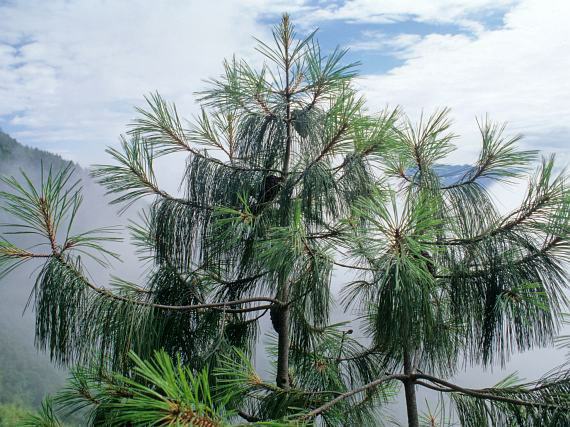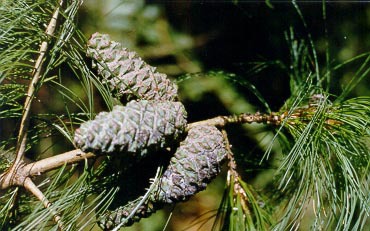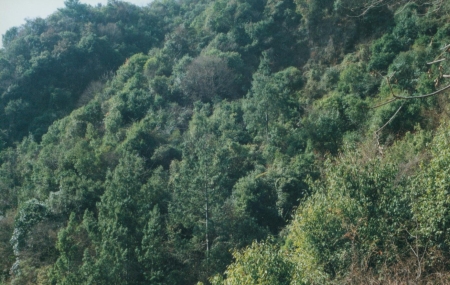subgenus Strobus (Lemmon), section Quinquefoliae (Duhamel), subsection Gerardianae (Loudon).
Pinus squamata, as described in 1992, by Li Xiang-Wang, in, "A new series and a new species of Pinus from Yunnan." Acta Botanica Yunnanica, vol. 14, is commonly known as Qiaojia pine, or Southern lacebark pine; as well as Š·§Š®¶äº”é’ˆæ¾ (qiaojia wuzhen song) in the Chinese language. The species describes the tree's flaky bark (squamata means "scaly" in the Latin language).
J.Q. Pangzhao discovered it in April of 1991, and formal study began in September of 1991. This may well be the world's rarest species of pine and one of the rarest of all conifers. The following description is based on material taken from a single population of around 20 relatively young trees. Many of the traditional taxonomic features have yet to be studied and described.
Description. Qiaojia pine is an evergreen, coniferous species of tree that grows to mature heights of at least 50 to 65 feet (15 - 20 m), mature height is not yet known, but will almost certainly reach 100 feet (30 m) tall over time.
- Bark is smooth and off-white in color; closely similar to that of P. bungeana.
- Branches are pale gray and smooth.
- Shoots greenish-brown, smooth.
- Leaves (needles) superficially resemble Pinus armandii, held drooping, in fascicles of 4 to 5 per, each measuring 3.6 to 6.8 inches (9 - 17 cm) and slender, 0.032 inch (0.8 mm) wide, colored glossy green on dorsal face, with white bands or stomata on inner faces.
- Foliar sheaths mostly deciduous, but the smallest sheath scales are moderately persistent, as in Pinus rzedowskii and P. maximartinezii.
- Seed cones are similar to P. rzedowskii and P. balfouriana, colored green ripening red-brown, measuring 3.6 inches (9 cm) long (or more), by 1.2 to 1.6 inches (3 - 4 cm) broad (when closed), on a 0.4 inch (1 cm) long peduncle.
- Cone scales have a flat to slightly raised apophysis and a dorsal "unarmed" umbo, but actually including with a small, circa 0.04 inch (1 mm) mucro much as in Pinus balfouriana.
- Seeds small, at 0.16 to 0.2 inch (4 - 5 mm), with a 0.72 inch (16 mm), articulate wing.
Distribution. This species is native to China - Qiaojia Xian and northern Yunnan, growing at elevations of about 9,500 feet (2,200 m) above sea level. The species is critically endangered. Only about 20 extant trees are known. Those shown in the galleries are young, perhaps only about 30 years old, mixed with
Pinus yunnanensis in a habitat which appears to comprise open scattered degraded secondary woodland, scrub and grassland. The widely-spaced branch whorls suggest that these trees are, as of yet, far from mature.
Speculatively hardy to USDA Zone 9 - cold hardiness limit between 20° and 30°F (-6.6° and -1.1°C).




